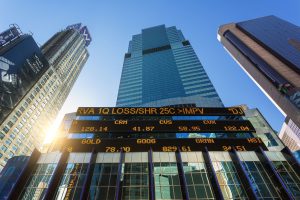
Introduction: The Importance of Portfolio Diversification for Banks
Portfolio diversification is a crucial strategy employed by banks to manage risk and optimize returns. By spreading investments across various asset classes, industries, and geographical regions, banks can minimize the impact of market volatility and potential losses. According to a study by the Bank for International Settlements, banks with well-diversified portfolios experienced lower losses during the global financial crisis of 2007-2008 compared to those with concentrated holdings. This highlights the importance of understanding how portfolio diversification affects bank returns.
Diversification allows banks to reduce their exposure to idiosyncratic risks associated with individual assets or sectors. For example, if a bank heavily invests in the real estate sector and the housing market experiences a downturn, the bank’s returns could be severely impacted. However, by diversifying into other sectors, such as technology, healthcare, and consumer goods, the bank can offset potential losses from the real estate sector with gains from other industries.
Moreover, geographical diversification enables banks to mitigate country-specific risks. Investing in multiple countries with different economic cycles and political environments can help banks maintain stable returns. For instance, during the European debt crisis of 2010-2012, banks with significant exposure to countries like Greece, Spain, and Italy faced substantial losses. Banks that had diversified their portfolios across other regions, such as North America and Asia, were better positioned to weather the crisis.
A study published in the Journal of Banking & Finance found that banks with higher levels of diversification in asset classes and geographies exhibited lower volatility in their returns and were less likely to experience extreme losses during market downturns. The study analyzed data from over 1,000 banks across 50 countries, providing empirical evidence for the benefits of portfolio diversification.
While diversification can help mitigate risks, it is important to note that it does not eliminate them entirely. Banks must still conduct thorough due diligence and risk assessments when constructing their portfolios. They must consider factors such as the correlation between assets, the liquidity of investments, and the regulatory environment in which they operate.
This article explores how portfolio diversification affects banks’ returns and the key factors that influence this relationship. By understanding the importance of diversification and its impact on risk and returns, banks can make informed decisions when allocating their assets and developing investment strategies.
Understanding Portfolio Diversification
Portfolio diversification involves allocating funds to a wide range of assets with different risk profiles and expected returns. According to a study by the Journal of Banking & Finance, “Diversification is the primary tool for reducing risk in investment portfolios.” By investing in a mix of stocks, bonds, real estate, and other financial instruments, banks can reduce their exposure to any single asset or market.
Dr. Harry Markowitz, a Nobel laureate in economics, pioneered the modern portfolio theory, which emphasizes the importance of diversification. He stated, “Diversification is the only free lunch in investing.” Banks can potentially achieve higher risk-adjusted returns by spreading risk across multiple assets.
The Impact of Diversification on Banks’ Returns
Diversification can have a significant impact on banks’ returns. A well-diversified portfolio can help banks generate stable income streams and mitigate the effects of economic downturns. According to a report by McKinsey & Company, “Banks with more diversified portfolios tend to have higher returns on equity and lower volatility of returns.”
A study published in the Journal of Financial Stability found that banks with more diversified loan portfolios experienced lower default rates and higher profitability during the 2008 financial crisis. The authors concluded that “diversification benefits are more pronounced during times of financial distress.”
Factors Influencing the Effectiveness of Diversification
Several factors can influence the effectiveness of portfolio diversification for banks:
1. Asset Allocation: The proportion of investments allocated to different asset classes plays a crucial role in determining the risk-return profile of a bank’s portfolio. A study by the Federal Reserve Bank of New York found that “asset allocation explains about 90 percent of the variability of a portfolio’s returns over time.”
2. Correlation between Assets: The degree to which different assets move in relation to each other affects the diversification benefits. Low or negative correlation between assets can enhance diversification and reduce overall portfolio risk. Dr. William Sharpe, a Nobel laureate in economics, emphasized the importance of correlation, stating, “Diversification is not so much a function of the number of assets in a portfolio as it is of the relationship between them.”
3. Market Conditions: The effectiveness of diversification can vary depending on market conditions. During periods of market stress or contagion, correlations between assets may increase, reducing the benefits of diversification. A study by the International Monetary Fund found that “the benefits of international diversification tend to be lower during periods of global market turbulence.”
Challenges and Considerations for Banks
While portfolio diversification offers numerous benefits, banks must also consider the challenges and limitations associated with this strategy:
1. Regulatory Requirements: Banks must adhere to regulatory guidelines and capital requirements when constructing their portfolios. These regulations may limit the extent to which banks can diversify their investments. The Basel Committee on Banking Supervision sets international standards for bank capital adequacy and risk management.
2. Liquidity Constraints: Diversification may involve investing in less liquid assets, which can be challenging for banks to manage during times of market stress. Banks must strike a balance between diversification and maintaining sufficient liquidity to meet their obligations. The Bank for International Settlements emphasizes the importance of liquidity risk management in its “Principles for Sound Liquidity Risk Management and Supervision.”
3. Expertise and Resources: Effective diversification requires specialized knowledge and resources to identify and manage investments across different asset classes and markets. Banks must invest in talent and technology to support their diversification strategies. A report by Accenture highlights the need for banks to “leverage data and analytics to gain insights into portfolio performance and risk exposures.”
Conclusion: Balancing Risk and Return through Diversification
Portfolio diversification is a powerful tool for banks to manage risk and optimize returns. By spreading investments across various assets and markets, banks can reduce their exposure to specific risks and potentially enhance their profitability. However, diversification is not a one-size-fits-all solution, and banks must consider factors such as asset allocation, correlation, market conditions, regulatory requirements, and liquidity constraints when implementing their strategies.
As the financial landscape evolves, banks must adapt their diversification approaches to navigate new challenges and opportunities. By striking the right balance between risk and return, banks can position themselves for long-term success and resilience in an ever-changing market environment.
From Classics to Current Affairs: Timeless Topics

Is withholding information manipulation?

How do I know my socioeconomic status?

How did the stock market panic 2020 reshape investor strategies?

Could the stock market panic of 1907 happen again?

How does the stock market trend after election affect investments?

How did the GameStop saga of 2021 reshape the stock market?























